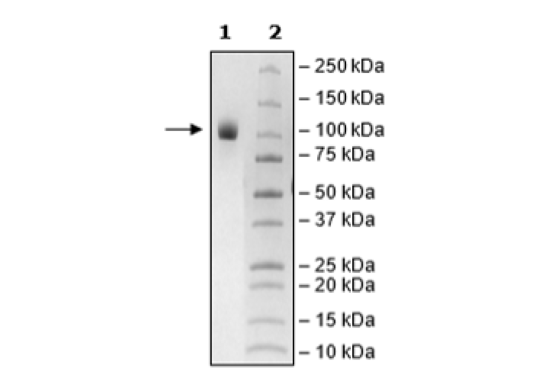FGFR1a (IIIc), Fc Fusion, Avi-Tag Recombinant
Recombinant human FGFR1a (IIIc) (fibroblast growth factor receptor 1 alpha IgIII domain c), encoding amino acids 22-376, corresponding to the extracellular domain. This construct has a C-terminal human IgG1 Fc domain followed by an Avi-Tag™. This protein was affinity purified.
≥90%
Aqueous buffer solution.
8 mM phosphate, pH 7.4, 110 mM NaCl, 2.2 mM KCl, and 20% glycerol
FGFR1 (fibroblast growth factor receptor 1), also known as FLT2, is a member of the FGFR family, a family of four membrane-spanning tyrosine kinases (FGFR1-4) which serve as high-affinity receptors for 17 growth factors (FGF1-17). The FGF Receptor family plays an important role in multiple biological processes, including mesoderm induction and patterning, cell growth and migration, organ formation and bone growth. FGFR1 is alternatively spliced generating multiple splice variants that are differentially expressed during embryo development and in the adult body. It undergoes splicing on the IgIII domain, the domain involved in ligand specificity, creating two alternative forms: IIIb and IIIc. FGFR1a (IIIc) can bind to FGF1, 2, 4, 5, 6, 19, 20, and 21. FGFR proteins are tightly regulated, being usually ubiquitinated by CBL (Cbl proto-oncogene E3 ubiquitin protein ligase) after activation, with FGFR1 being more susceptible to undergo ubiquitination. FGFR1 has been linked to breast, ovarian, and other types of cancer, making the development of FGFR1-targeted inhibitors an active and promising field of research in cancer therapy.


